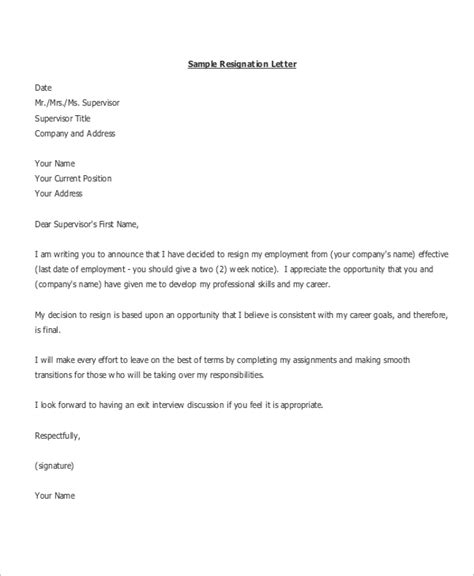Sample Of A Formal Resignation Letter In English

Resigning from a job can be a difficult and emotional decision. Whether you are leaving for personal reasons, career advancement, or because of a toxic work environment, it is important to resign professionally and with respect. Writing a formal resignation letter is the first step in this process. In this article, we will guide you through the process of writing a professional resignation letter that leaves a positive impression on your employer and co-workers.
Heading 1: Introduction
Begin your resignation letter by addressing your employer or manager by name and stating your intention to resign from your position.
Subheading 1: Addressing Your Employer
Use a formal salutation to address your employer, such as “Dear Mr./Ms. [Last Name].”
Subheading 2: Stating Your Intention
State clearly in the first paragraph that you are resigning from your position and the date on which your resignation will be effective.
Heading 2: Reason for Resignation
You may choose to include a brief explanation of why you are resigning from your position.
Subheading 1: Be Honest
If you feel comfortable, you may include a brief explanation of why you are resigning. It is important to be honest without being negative or critical of your employer or co-workers.
Subheading 2: Keep it Professional
Remember, this letter will go in your employment file. Keep it professional and avoid sharing personal or emotional reasons for leaving.
Heading 3: Gratitude
Express gratitude for the opportunity to work with your employer and the experience you gained while working with them.
Subheading 1: Thank Your Employer
Thank your employer for the opportunity to work with them and the experience you gained while working for them.
Subheading 2: Express Appreciation
Express appreciation for the support and guidance you received from your employer and co-workers during your time with the company.
Heading 4: Transition
Offer to assist your employer with the transition process and provide information on how you plan to complete any outstanding projects or tasks.
Subheading 1: Offer to Assist
Offer to assist your employer with the transition process by training your replacement or completing outstanding projects or tasks.
Subheading 2: Provide Information
Provide information on how you plan to complete any outstanding projects or tasks and ensure a smooth transition.
Heading 5: Closing
Close your resignation letter by thanking your employer again and providing your contact information.
Subheading 1: Thank Your Employer
Thank your employer again for the opportunity to work with them and the experience you gained while working for them.
Subheading 2: Provide Contact Information
Provide your contact information so that your employer can reach you if necessary.
Heading 6: FAQs
Subheading 1: Should I include a reason for resigning in my letter?
While it is not necessary to include a reason for resigning, it is often appreciated by employers. If you choose to include a reason, be honest and professional.
Subheading 2: How should I address my employer in my resignation letter?
Address your employer or manager by name and use a formal salutation, such as “Dear Mr./Ms. [Last Name].”
Subheading 3: What should I include in the transition section of my resignation letter?
Offer to assist with the transition process by training your replacement or completing outstanding projects or tasks. Provide information on how you plan to complete any outstanding projects or tasks.
Subheading 4: Should I express gratitude in my resignation letter?
Yes, it is important to express gratitude for the opportunity to work with your employer and the experience you gained while working for them.
Subheading 5: How should I close my resignation letter?
Close your resignation letter by thanking your employer again and providing your contact information.
Conclusion
Writing a professional resignation letter is an important step in leaving a positive impression on your employer and co-workers. Remember to be honest, professional, and express gratitude for the opportunity to work with your employer. Offer to assist with the transition process and provide information on how you plan to complete any outstanding projects or tasks.
